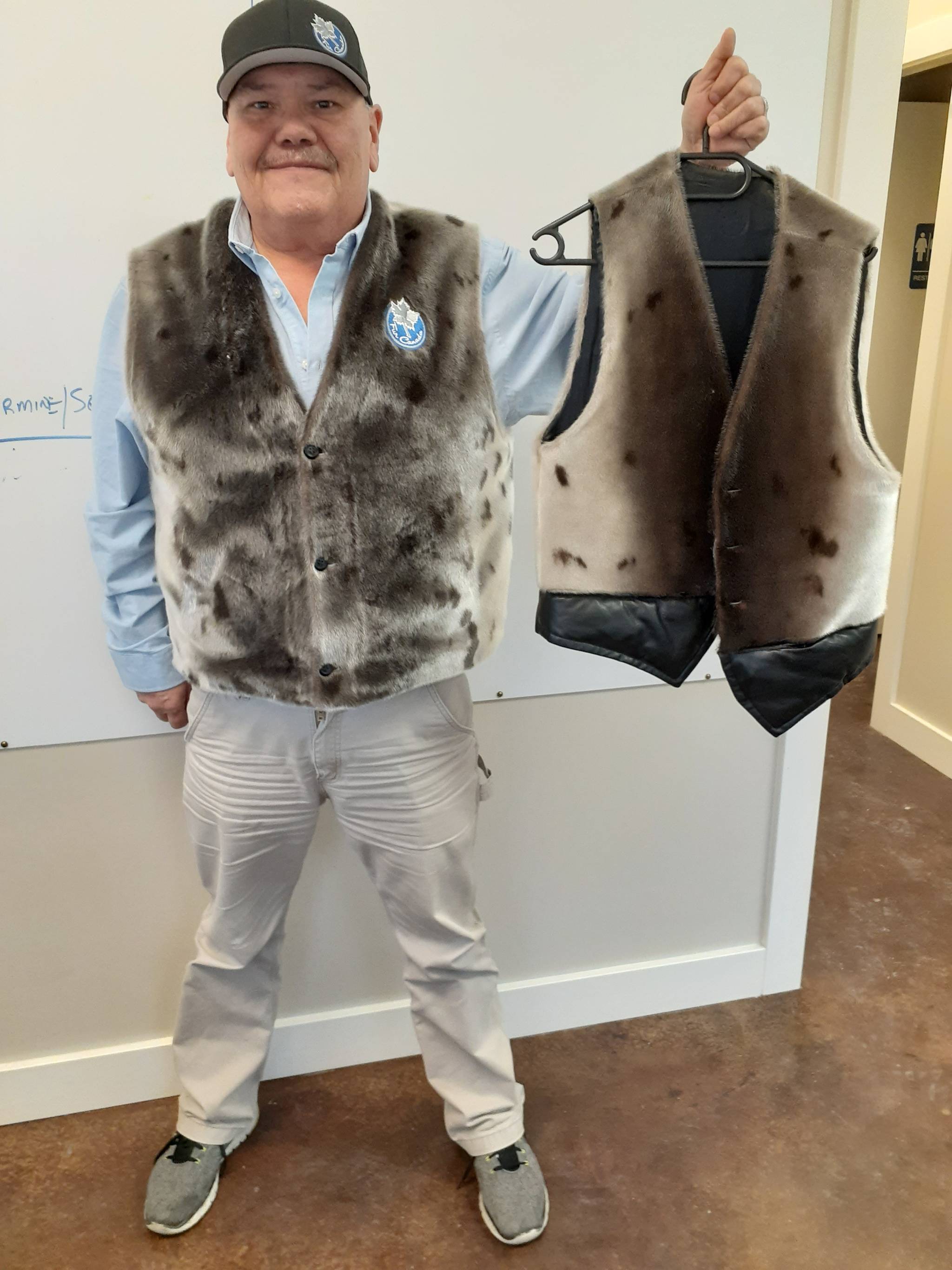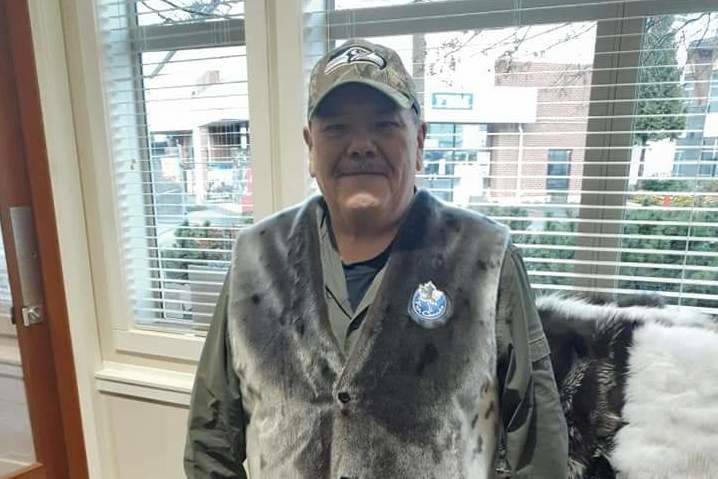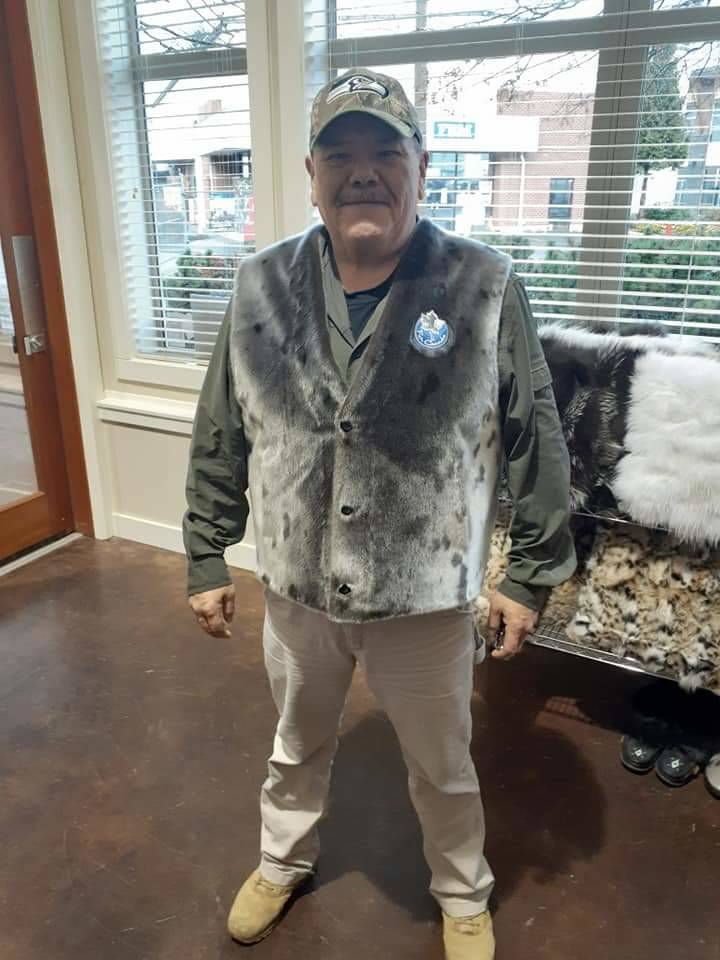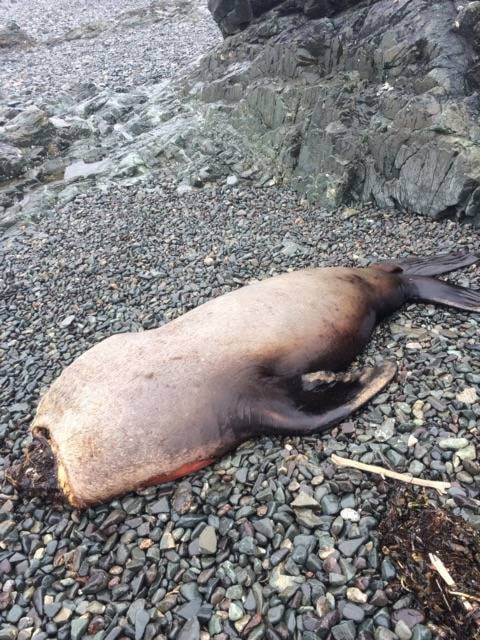Rumours of overabundant seals decimating salmon stocks may be greatly exaggerated.
Photos of decapitated pinnipeds that were posted by a group proposing a seal and sea lion commercial fishery got the attention of scientists, conservation groups and animal rights groups. One of the groups, Animal Alliance of Canada, reached out to the Mirror to express their concern about the decapitations.
“It is ecologically a disaster for marine life and local ecosystems,” said Animal Alliance’s west coast director Jordan Reichert. “The consequences would be far-reaching on different species such as the transient orcas that actually feed on seals and sea lions, and for other marine life that depend on that whole food chain system.”
The harvesting proposal is being made by Pacific Balance Marine Management (PBMM) and is before the DFO. PBMM posted the photos as a caution to other hunters, asking them to use better practices when hunting seals and sea lions.
RELATED: Another headless sea lion found on Campbell River beach
PBMM’s president Tom Sewid belongs to the Kwakwaka’wakw First Nation. First Nations people already have permission to hunt seals and sea lions for cultural purposes, and he believes commercial licensing would build a market for pinniped (the name for four-finned marine mammals) products.
“We have the right to harvest, we’ve always been harvesting since the beginning of creation to present. Since [the 1970s], we’ve not been allowed to sell any part of the seal and sea lion. There has been no economic revenue generation through the seal and sea lion harvest. That’s what we’re submitting the marine management plan about,” said Sewid.
One of the reasons for the proposed fishery is to stop a perceived overpopulation of the seals and sea lions which, according to Sewid, are one of the main causes of salmon depletion in the area.
However, scientists do not agree, even amongst themselves, whether the pinnipeds are the cause for salmon depletion. Dr. Andrew Trites is a professor for the Institute for Oceans and Fisheries and the director of the Marine Mammal Research Unit at UBC. He explained the two theories of salmon population decline. One theory, and PBMM’s basis for their application, is that predation by pinnipeds is the cause. The other theory is that the salmon are unable to grow to maturity because of the large numbers put into the ecosystem by hatcheries.
“In the end, there may well be a combination of both things at play here. It may not simply be one or the other,” Trites said. “We have evidence that [the pinnipeds] do eat these fish, so they automatically become a suspect. You have to keep in mind that they’re not the only things that eat salmon smolts. We know that birds eat them such as blue herons, terns eat them, cormorants love them.”
Trites’ research into the Salish Sea ecosystem shows that it is more complicated than a simple linear food chain. A number of animals prey on salmon, and the ocean cannot carry infinite amounts of fish. Other animals, like transient killer whales, are dependant on pinnipeds as their food source. Trites explained that the seal population has stabilized and that could be due to the return of transients to the Salish Sea.
“If you remove the seals, you’re removing the food of the transient killer whales,” Trites said. “What’ll happen to the transients? Well we’ll need to have a recovery plan. We’ll have to shut down something to help save them. It’s not clear to me how well the public will respond to doing harm to killer whales.”
“If you were to go ahead and remove a large number of all the seals and sea lions and you end up being totally wrong, it would take 20 to 30 years for the system to recover,” he added. “You’re really rolling the dice of life here and potentially even changing the ecosystem in the process.”
The battle between fishers and marine mammals has a long history. People were allowed to hunt the animals until the 1970s, when pinnipeds were protected. Sewid and PBMM want to bring back the hunt, but to keep it in the hands of First Nations people, who he says have traditionally kept the pinniped numbers in check.
“It’s addressing how we would do it ethically, humanely, we’ve identified the markets, we set up capacity training program for all hunters and First Nations to take so that we don’t have all the bloaters floating on the beaches as we do right now from poachers that are out there.”
The evidence does not support the idea that the pinniped population is exploding. Since the 1990s the numbers of pinnipeds have actually stabilized, thanks to a resurgence in transient orcas in the area.
“There are a few cases around the world where in the absence of humans, systems have come back to a natural state,” Trites explained. “I wonder whether as people have stopped hunting and killing seals and sea lions, we’re seeing things come back and attaining a new natural balance…. nature is well-tuned to take care of itself if given the chance.”
Higher seal populations may also be strengthening the populations of Chinook and Coho salmon.
“When you think about the Serengeti, where lions are chasing down the gazelles, often they’re catching the slow and sick individuals and we look at it being healthy for a population to have the inferior animals removed from it. We think the same thing may be happening with the seals,” Trites added.
Sewid says PBMM is not advocating a cull. Members of PBMM were part of a similar group called Pacific Balance Pinniped Society, which was advocating for a derby-style cull of 50,000 in the first year, and 3,000-5,000 in years after. They split off in June 2019.
“We never proposed any cull. Cull is a dirty four-letter word, why would an Indian shoot and waste something?” Sewid said. “We have nothing to do with [Pacific Balance Pinniped Society] nor do we support their process.”
Sewid filed a separate application for PBMM which DFO will assess by June.
DFO were unable to speak to the Mirror due to the ongoing nature of the application. Part of their process is to go over the data available and make a decision based on what is causing the salmon population depletion, which Trites says is difficult even for scientists.
“Sometimes when people find a scientific theory that fits with their belief they look no further,” he said. “The reality is that there’s a huge division amongst the scientists, and there’s no certainty at all about what’s really wrong with the Chinook. We’ve got good theories and data, but the confidence that we really know what’s going on and can take action to fix it is just not there.”



